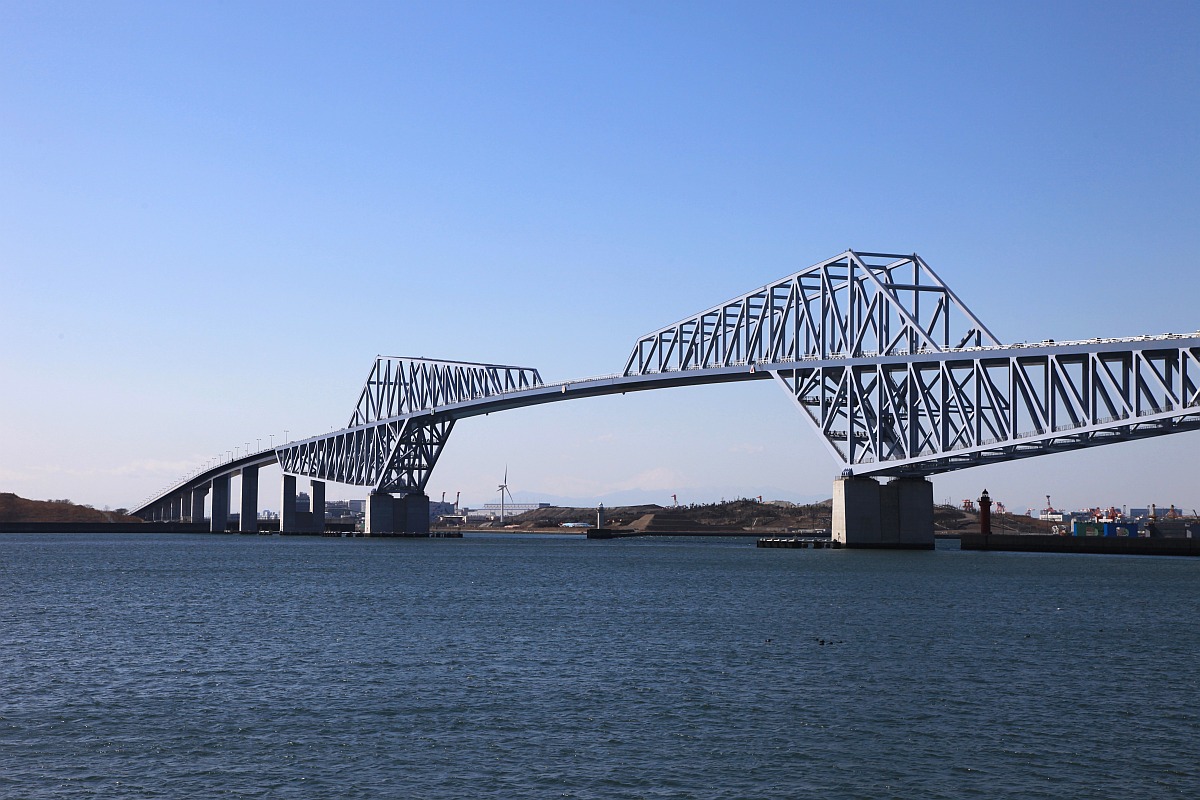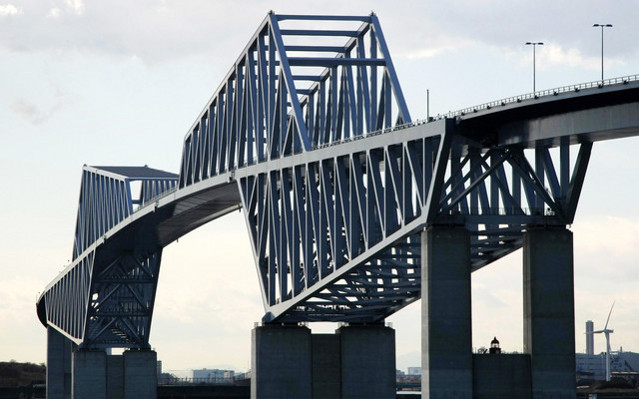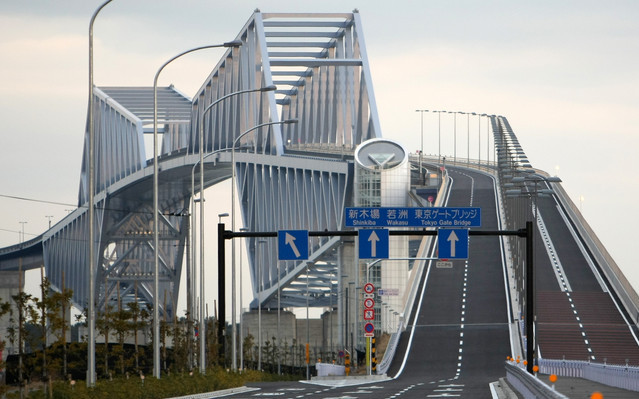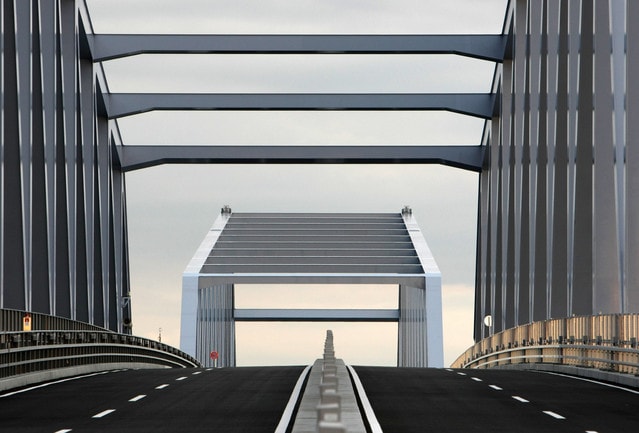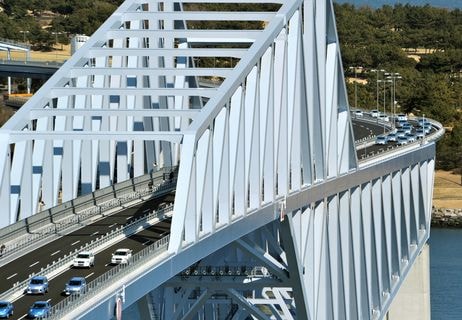Japan has always been one of the countries that rolled out top-notch technologies and not necessarily in the automotive industry, although we all agree that Japanese car manufacturers are still creating some of the most reliable products in the whole world.
It's no surprise that the automotive sector evolved at a very fast pace, but the real good thing is that this impressive growth has also attracted investments in a number of different sectors, including the thing we need the most in conjunction with a car: infrastructure.
In the last decades, countries around the world, either individually or as part of larger alliances, contributed to the creation of various projects, such as highways, bridges or tunnels, be they under or above the sea.
As a result, new state-of-the-art infrastructure projects have seen daylight all over the world and Japan again remains one of the names to innovate.
Just as expected, Japanese engineers had absolutely no problem turning their imagination to reality, a process that led to the creation of one of the first and the most important infrastructure projects to be opened in 2012: the so-called Dinosaur Bridge or, also known by its official name, the Tokyo Gate Bridge.
Wondering why it's being called the Dinosaur Bridge? Well, remember the phrase when we mentioned the Japanese engineers' imagination? That's why. Because it's shaped like a dinosaur. And if you wonder how's that possible, don't forget it's Japan were talking about here, the state where the craziest technology innovations take shape in a second.
The Dinosaur Bridge is 2.6 kilometers long and has a total of 4 lanes.
The story behind the Dinosaur Bridge is pretty interesting. Not a long time ago, Tokyo was one of the cities bidding for the 2016 Summer Olympics and, in order to increase its chances of becoming the new host of the games, it started a new infrastructure project. Called Tokyo Gate Bridge, Tokyo's latest landmark was started in 2002 to serve as a link between Tokyo and a man-made island that's going to host a new shipping terminal currently under construction.
Unfortunately, or fortunately if we have a look at the recently-opened landmark, Tokyo lost the race for the Summer Olympics to Rio de Janeiro.
Still, why a dinosaur? you may ask. Well, nobody knows for sure, but engineers have spent no less than two years to design the trusses which, in the end, were mounted on the bridge with the help of three cranes installed on boasts.
Officially opened on February 12, 2012, the bridge measures 1.6-mile (2.6 km) and has a total of four lanes. The weight? No less than... hold your breath... 36,000 tons!
It's a well known fact that Japanese engineers do an amazing job when it comes to infrastructure and the new Dinosaur Bridge makes no exception to this rule. Total investments were initially estimated at 140 billion yen but, in the end, the whole bridge needed just 113 billion yen (US$1.45 billion). Quite a lot of money, isn't it? But that's not a problem at all, say the authorities, as the bridge will pay off in no time.
Tokyo Gate Bridge is expected to carry 32,000 vehicles each day and the estimates are more than optimistic. The average time needed to get from the Shin-Kiba district to the man-made island is approximately 19 minutes, while using the bridge the time is being reduced to only 10 minutes. Thanks to this, the bridge is expected to generate 19 billion yen (US$246 million) annually, according to local authorities.
We're talking about Japan, so driving on a 2,6-kilometer long bridge is quite dangerous since earthquakes take place on a regular basis, right? Well, not quite, or at least, not if you travel by “dinosaur”.
Thanks to its strength, the Tokyo Gate Bridge can withstand an earthquake even if it takes place right underneath Tokyo, without putting at risk the lives of drivers, passengers and pedestrians. Because yes, the bridge also comes with a dedicated walkway for pedestrians, so in case you feel like jogging and 2,6 kilometers sounds reasonable, make sure to head to the new landmark.
Engineers needed no less than 2 years to design the shape of the bridge.
But building such a bridge wasn't quite piece of cake, although we're talking about Japan. Because it was close to the Haneda airport, engineers had to pay extra care to the height, which had to be carefully adjusted to allow airplanes take off and land on the airport. On the other hand, it had to be high enough to let the ships pass safely but, at the same time, the bridge had to be designed in such a manner that it could withstand a massive earthquake.
Construction of the bridge advanced quickly once the design was completed, so engineers started the work on each side before eventually building the central span section on February 27, 2011.
A funny thing is that in the first day of traffic after the big opening ceremony, the Tokyo Gate Bridge also got to know what we, drivers, have to deal with every day: a traffic jam. Amazed by the sights of Tokyo Sky Tree and Mount Fuji, drivers actually had a lot of time to admire the views when passing the 87.8 meters high bridge due to traffic congestion.
All things considered, there's no doubt the newly-built Dinosaur Bridge is a state-of-the-art project, but criticism has already emerged in the country. Since Tokyo lost the Olympics bid to Rio de Janeiro, the bridge allows drivers to go from the city to nowhere or, if you prefer, to a place where some day, soon, as the authorities promise, a new container terminal will see daylight.
In the end, such a landmark isn't only a way to relieve traffic congestion, but also a way to boost economy. Authorities' estimates demonstrate that the bridge will pay off quickly, leading Tokyo to a more prosper future.
It's no surprise that the automotive sector evolved at a very fast pace, but the real good thing is that this impressive growth has also attracted investments in a number of different sectors, including the thing we need the most in conjunction with a car: infrastructure.
In the last decades, countries around the world, either individually or as part of larger alliances, contributed to the creation of various projects, such as highways, bridges or tunnels, be they under or above the sea.
As a result, new state-of-the-art infrastructure projects have seen daylight all over the world and Japan again remains one of the names to innovate.
Just as expected, Japanese engineers had absolutely no problem turning their imagination to reality, a process that led to the creation of one of the first and the most important infrastructure projects to be opened in 2012: the so-called Dinosaur Bridge or, also known by its official name, the Tokyo Gate Bridge.
Wondering why it's being called the Dinosaur Bridge? Well, remember the phrase when we mentioned the Japanese engineers' imagination? That's why. Because it's shaped like a dinosaur. And if you wonder how's that possible, don't forget it's Japan were talking about here, the state where the craziest technology innovations take shape in a second.
The Dinosaur Bridge is 2.6 kilometers long and has a total of 4 lanes.
The story behind the Dinosaur Bridge is pretty interesting. Not a long time ago, Tokyo was one of the cities bidding for the 2016 Summer Olympics and, in order to increase its chances of becoming the new host of the games, it started a new infrastructure project. Called Tokyo Gate Bridge, Tokyo's latest landmark was started in 2002 to serve as a link between Tokyo and a man-made island that's going to host a new shipping terminal currently under construction.
Unfortunately, or fortunately if we have a look at the recently-opened landmark, Tokyo lost the race for the Summer Olympics to Rio de Janeiro.
Still, why a dinosaur? you may ask. Well, nobody knows for sure, but engineers have spent no less than two years to design the trusses which, in the end, were mounted on the bridge with the help of three cranes installed on boasts.
Officially opened on February 12, 2012, the bridge measures 1.6-mile (2.6 km) and has a total of four lanes. The weight? No less than... hold your breath... 36,000 tons!
It's a well known fact that Japanese engineers do an amazing job when it comes to infrastructure and the new Dinosaur Bridge makes no exception to this rule. Total investments were initially estimated at 140 billion yen but, in the end, the whole bridge needed just 113 billion yen (US$1.45 billion). Quite a lot of money, isn't it? But that's not a problem at all, say the authorities, as the bridge will pay off in no time.
Tokyo Gate Bridge is expected to carry 32,000 vehicles each day and the estimates are more than optimistic. The average time needed to get from the Shin-Kiba district to the man-made island is approximately 19 minutes, while using the bridge the time is being reduced to only 10 minutes. Thanks to this, the bridge is expected to generate 19 billion yen (US$246 million) annually, according to local authorities.
We're talking about Japan, so driving on a 2,6-kilometer long bridge is quite dangerous since earthquakes take place on a regular basis, right? Well, not quite, or at least, not if you travel by “dinosaur”.
Thanks to its strength, the Tokyo Gate Bridge can withstand an earthquake even if it takes place right underneath Tokyo, without putting at risk the lives of drivers, passengers and pedestrians. Because yes, the bridge also comes with a dedicated walkway for pedestrians, so in case you feel like jogging and 2,6 kilometers sounds reasonable, make sure to head to the new landmark.
Engineers needed no less than 2 years to design the shape of the bridge.
But building such a bridge wasn't quite piece of cake, although we're talking about Japan. Because it was close to the Haneda airport, engineers had to pay extra care to the height, which had to be carefully adjusted to allow airplanes take off and land on the airport. On the other hand, it had to be high enough to let the ships pass safely but, at the same time, the bridge had to be designed in such a manner that it could withstand a massive earthquake.
Construction of the bridge advanced quickly once the design was completed, so engineers started the work on each side before eventually building the central span section on February 27, 2011.
A funny thing is that in the first day of traffic after the big opening ceremony, the Tokyo Gate Bridge also got to know what we, drivers, have to deal with every day: a traffic jam. Amazed by the sights of Tokyo Sky Tree and Mount Fuji, drivers actually had a lot of time to admire the views when passing the 87.8 meters high bridge due to traffic congestion.
All things considered, there's no doubt the newly-built Dinosaur Bridge is a state-of-the-art project, but criticism has already emerged in the country. Since Tokyo lost the Olympics bid to Rio de Janeiro, the bridge allows drivers to go from the city to nowhere or, if you prefer, to a place where some day, soon, as the authorities promise, a new container terminal will see daylight.
In the end, such a landmark isn't only a way to relieve traffic congestion, but also a way to boost economy. Authorities' estimates demonstrate that the bridge will pay off quickly, leading Tokyo to a more prosper future.
